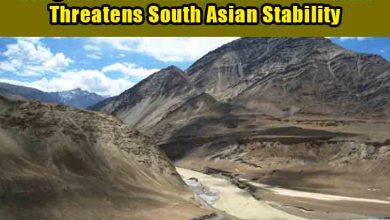Indus Water Treaty: Pakistan’s Looming Water Crisis and India’s Strategic Moves
Pakistan faces a major water crisis as India pushes to modify the Indus Water Treaty. Explore the history, politics, and urgent implications of IWT in 2025.
Water has always been the lifeblood of civilizations. From ancient Mesopotamia to the banks of the Nile, water dictated not just survival, but the rise and fall of empires. Today, it remains just as crucial—if not more so. For Pakistan, in particular, water is no longer just a resource – it’s becoming a matter of national security.
Water has always shaped societies. From agriculture to religion, trade routes to warfare, water has dictated human development. Just as access to the sea gives geopolitical leverage to coastal nations, river systems grant both prosperity and power to those who control them.
Consider the South China Sea or the Nile Basin—disputes over aquatic resources are deeply tied to national sovereignty. The importance of water becomes even more apparent when you ask any of the 44 landlocked countries how they view access to the sea.
Pakistan’s Growing Water Crisis in 2025
Studies now confirm what experts predicted decades ago: Pakistan is entering a critical phase of water scarcity.
Key Challenges:
-
Per capita water availability has dropped below the water-scarce threshold.
-
No major dams have been built in the last two decades.
-
Depleting aquifers threaten agriculture and drinking water supplies.
-
Storage capacity is rapidly declining due to sedimentation.
-
Governance issues and corruption further delay infrastructure projects.
In March 2025, the Indus River System Authority (IRSA) announced that water availability would only last until April—a chilling reminder of how close Pakistan is to a full-scale crisis.
What is the Indus Water Treaty (IWT)?
Signed in 1960 under the World Bank’s mediation, the Indus Water Treaty (IWT) has governed water-sharing between India (upper riparian) and Pakistan (lower riparian).
Treaty Highlights:
-
India received rights over the Eastern Rivers (Ravi, Beas, Sutlej).
-
Pakistan received exclusive rights to the Western Rivers (Indus, Jhelum, Chenab).
-
A Permanent Indus Commission (PIC) was created to resolve disputes and ensure compliance.
For over six decades, the treaty was hailed as a rare example of Indo-Pak cooperation. But that cooperation is now under threat.
India’s Recent Moves to Modify the Treaty
Following political developments in Indian Occupied Jammu & Kashmir (IOJ&K) in 2019, tensions around IWT escalated. Then in August 2024, India issued a notice to review and modify the Treaty, citing:
-
Climate change impacts
-
Environmental degradation
-
Demographic pressure
-
Growing domestic water needs
India also suspended all meetings of the PIC, halting the treaty’s built-in dispute resolution mechanism.
In September 2024, another formal notice reiterated these points—while signaling a potential withdrawal from IWT. Pakistan responded with a diplomatic appeal for treaty compliance, but India’s intentions seem firm.
The Political and Security Implications
India’s real objective appears to be gaining full control over water inflows into Pakistan. Citing internal needs as a pretext, India aims to restrict flows from the Western Rivers, effectively weaponizing water.
This strategy isn’t new. In 2016, after a terrorist attack, PM Modi famously declared:
“Blood and water cannot flow together.”
This aggressive stance is particularly dangerous given both nations’ nuclear capabilities. The collapse of the IWT could escalate regional tensions, potentially leading to conflict over water—a resource more valuable than oil in the 21st century.
Challenges Within Pakistan: Governance and Mismanagement
Even as India tightens the noose, Pakistan’s internal water mismanagement is compounding the crisis.
Shocking Facts:
-
The Public Accounts Committee (PAC) recently revealed massive corruption in hydropower projects.
-
One project’s cost ballooned from Rs 4 billion to Rs 36 billion.
-
Provincial disputes over water—like the Mahfooz Shaheed Canal issue in Cholistan—show political interests overriding national priorities.
These failures threaten to cripple agriculture, increase health crises, and create inter-provincial conflicts.
What’s Next for the Indus Water Treaty?
Can India legally revoke or exit the Indus Water Treaty?
While the IWT is a bilateral agreement, it was brokered under international supervision. Unilateral withdrawal could violate international water laws and provoke diplomatic backlash.
However, India’s strategy seems more tactical than legal—it is using delay, pressure, and renegotiation as tools to reframe the treaty under its own terms.
Conclusion: A Crisis Demanding Immediate Action
Pakistan is standing at a dangerous crossroads.
-
Water is no longer just a resource—it’s a strategic asset.
-
India’s moves to alter the Indus Water Treaty could push Pakistan toward a national emergency.
-
Domestic mismanagement must be urgently addressed.
-
The time for complacency is over.







